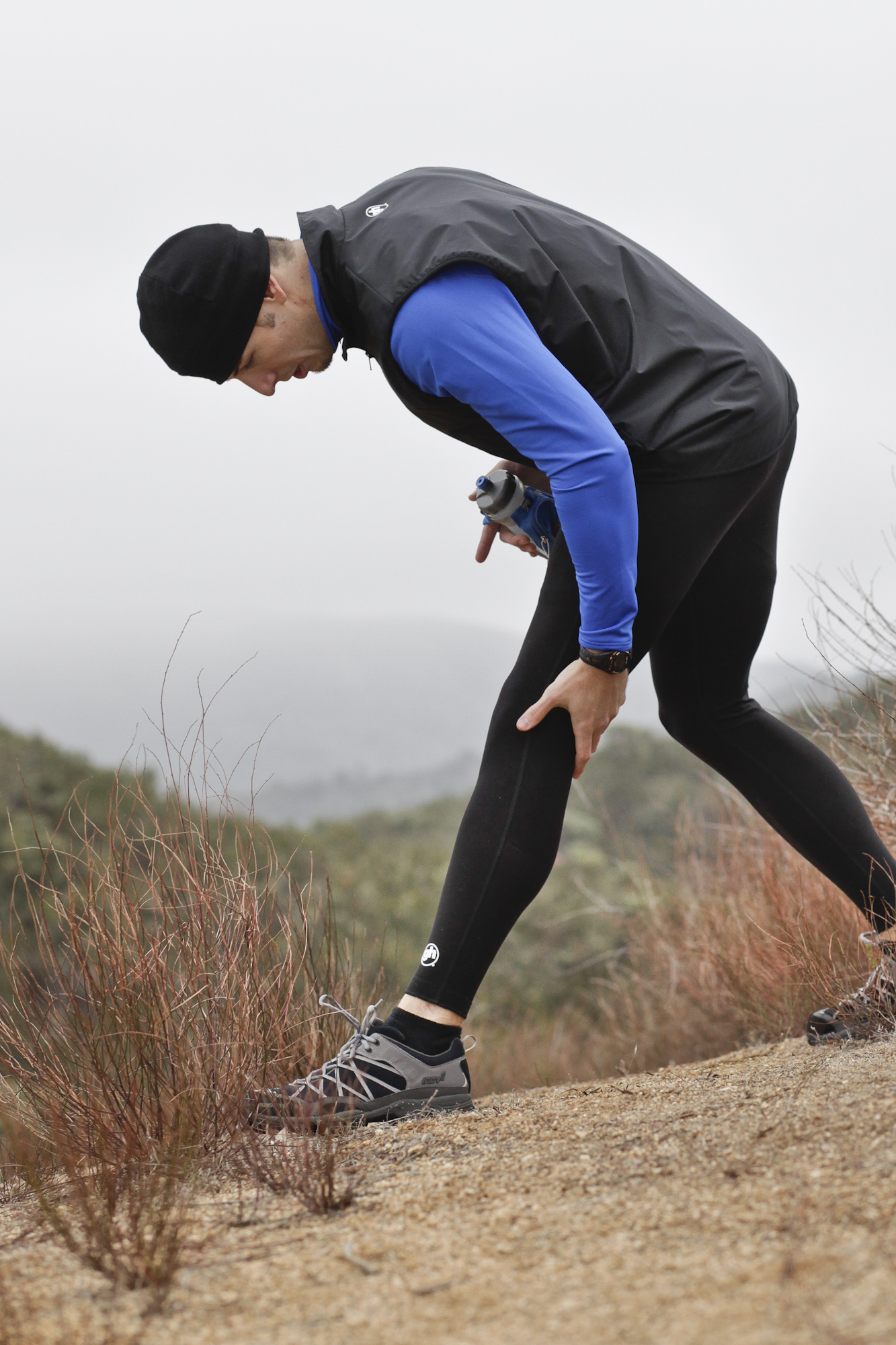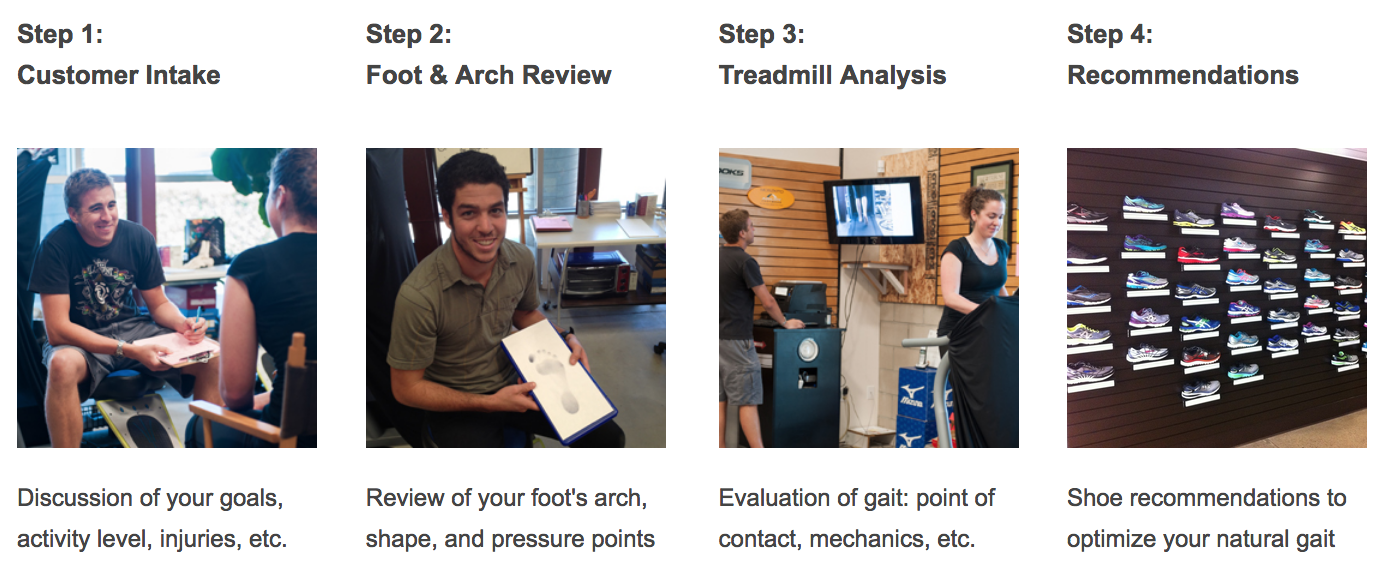Plantar Fasciitis is an extremely common walking, running, and foot problem that we see regularly – and that most our staff has dealt with as well. Being proactive at first sign of Plantar Fasciitis symptoms can reduce the severity of pain and reduce the amount of time it takes to heal your foot (or feet for some). And if you train hard and often, an early diagnosis and treatment plan can save you weeks (and even months) in your training schedule.

The plantar fascia is the flat band of tissue (ligament) that connects your heel bone to your toes, supporting the arch of your foot. When your plantar fascia is strained, it gets weak, swollen, and irritated.
Doesn’t sound fun, right? And if you’ve ever suffered (or are suffering) from Plantar Fasciitis you know it can very quickly become very painful.
Follow these four strategies our staff has shared to prevent, identify and treat the dreaded pain that Plantar Fasciitis brings.

- You feel heel pain, especially in the morning or after sitting long periods of time.
- You feel a “burning” sensation or sharp pain in the arch or heel of the foot – it sometimes feels like a sharp rock in your shoe.
- Depending on the severity, it can be constant or short/random pain or burning.
- You may feel the effects in one or both of your feet
#2: Understand Common Causes so that you can be proactive in reducing your chances of suffering from plantar fasciitis.
- Over-pronation. If you naturally over-pronate, you are at higher risk. To reduce this risk, get a gait analysis from a shoe expert at a specialty running store.
- If you have high arches or flat feet, you are at higher risk. Make sure you have the correct support from your shoes and/or orthotics if needed. A gait analysis can provide important insight.
- Walking, standing, running for long periods of time on hard surfaces. Wearing proper shoes in these situations can help. Even taking small breaks to rest your feet during these long periods of standing can really help the feet rest and recover.
- Major impact on heel or arch of foot.
- Worn out or incorrect shoes. Walking, hiking and running shoes should be replaced every 6 months – as a general rule of thumb.
- Starting or increasing exercise routines too quickly. It’s true here that slow and steady win the race.
- Routine intense training. Be sure to give your body recovery breaks in your workout routine, rest days are just as important as active days.
- Lack of foot strength/flexibility. Walking barefoot, stretching your lower body, and rolling your foot on a ball (consider tennis, lacrosse or spiky balls) help stretch and strengthen. Only go barefoot when healthy, not while suffering from Plantar Fasciitis.
- Being overweight also increases stress on the feet and chances of Plantar Fasciitis.
- Tight achilles are a big no no. Calf stretches can help.
#3: Treat Plantar Fasciitis immediately and consistently
- Rest. If you do this early, it can mean only missing out on a few training days. If you try to run through the pain, you can miss your entire season. Walking, running, cycling, and hiking do not count as rest, you need to give your foot time to heal. The less pressure on the foot the better.
- Ice heel (best to use a frozen water bottle and roll it under the foot) and take ibuprofen. Ice 2-3 times a day for 15 minutes, it’s best to not ice right before any activities.
- Get new shoes that support the arch of your foot. Getting a gait analysis at a well-established and reputable specialty running store will show you the exact support your arch and foot needs.
- Get orthotics for shoes that do not offer your gait enough support. You can find a variety available at GH Sports.
- Use a tennis, lacrosse, or spiky ball to break up scar tissue in the arch.
- Do toe stretches, calf stretches, or towel stretches when getting up in the morning.
- Stay away from sandals, high heels, and flexible shoes.
- If problem persists, night splints can be used to keep your foot in a flexed position to ensure proper healing each night.
- Seek a podiatrist for custom insoles and possible injections.
- Plantar Fasciitis typically takes a couple of months and up to a year to completely treat the issue and relieve the pain. If treatment steps are not taken early enough, the injury can result in surgery and potentially years of recovery.


#4 Tips to Consider
- If your orthotic is too rigid or uncomfortable try putting it under the sock liner in your shoes instead of removing the entire sock liner.
- When shopping for supportive shoes it is always a good idea to bring your orthotics with you so that you can try them in the new shoes. It is not uncommon to have to increase the shoe size by ½ a size to accommodate the orthotic.
- If your feet hurt after wearing the orthotic try using it for 1 hour then removing it. Slowly bump up the number of hours you are wearing it until you are able to wear it all day.
- When healthy, walk around barefoot for brief periods to increase general foot strength.
- It doesn’t work for everyone, but if you must be active sometimes swimming will not aggravate the feet and can be great for keeping up on your cardio.
Jake
GH Staff Member
Jake is a graduate of the Kinesiology Department at Cal Poly San Luis Obispo and is currently pursuing his master’s within the same department. He enjoys taking weekend hiking or backpacking trips to Montana de Oro or Big Sur, running the San Luis Obispo Marathon, backpacking in Salt Lake City, Utah, and participating in the local Tri-Tip challenge. He has worked at GH Sports since June 2014 and most appreciates helping customers get fitted in the right running shoe.
Leave a Reply